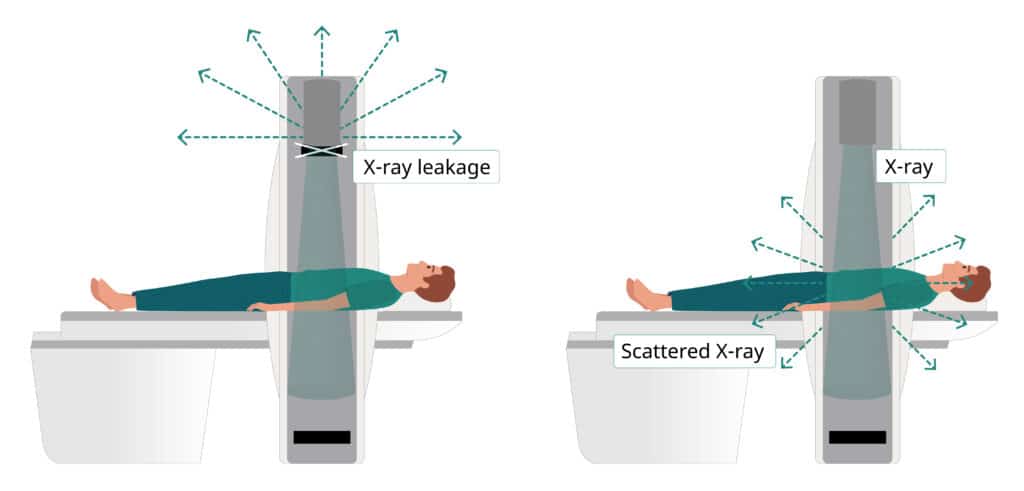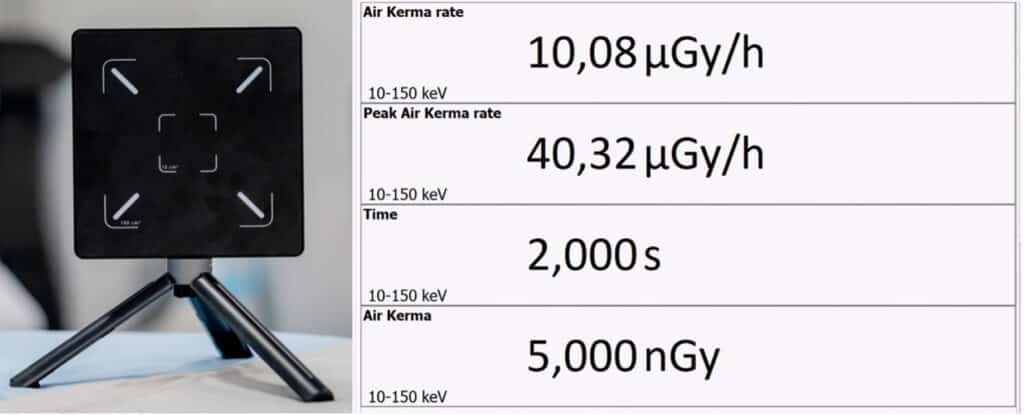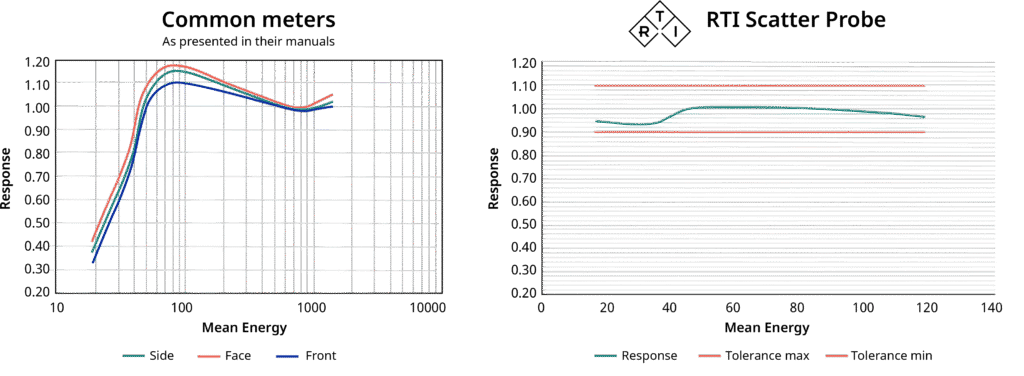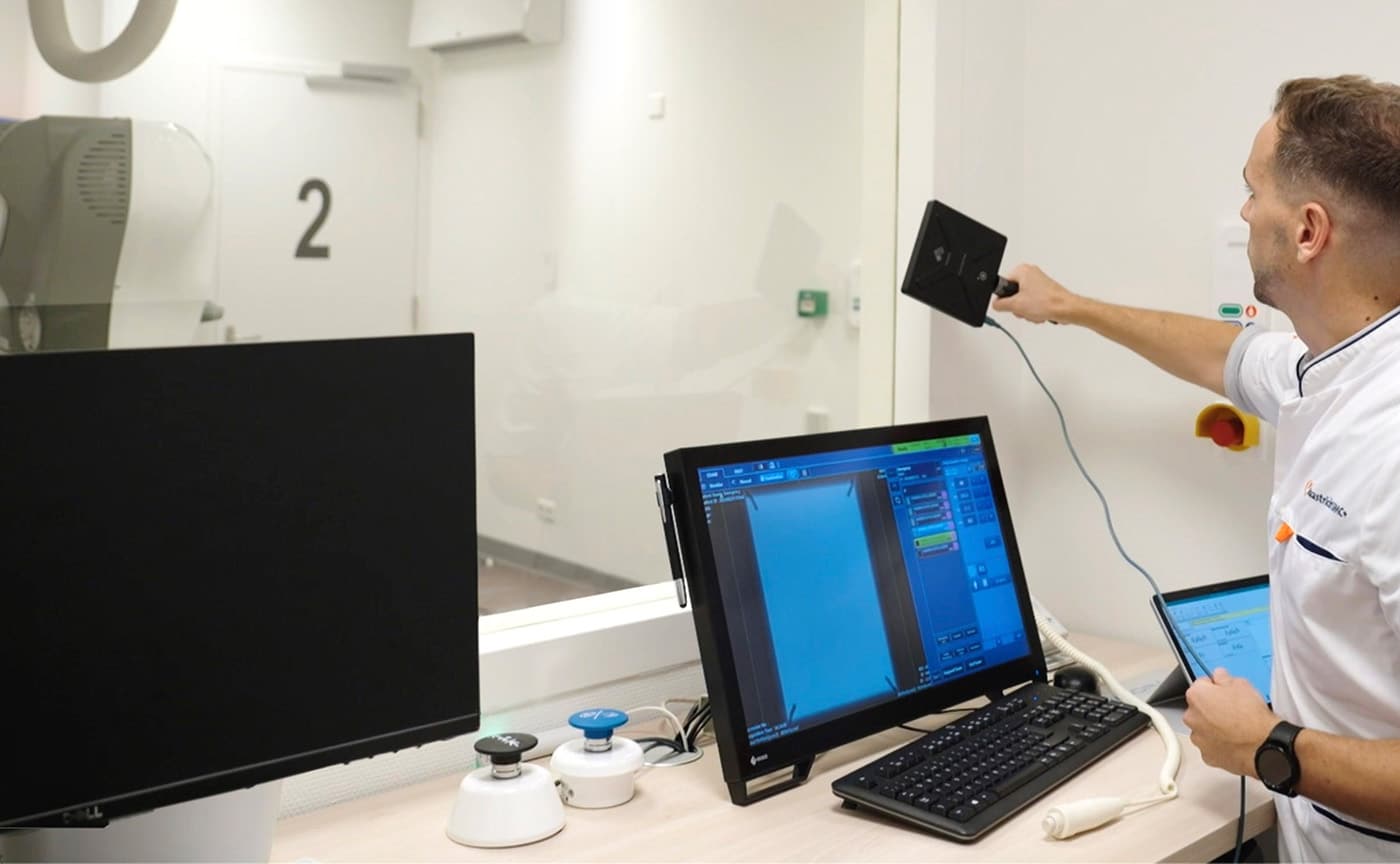RTI Scatter Probe: the must-have tool for x-ray scatter and leakage testing in diagnostic x-ray
Why Medical Physicists are moving away from survey meters and switching to the RTI Scatter Probe
What is X-ray Leakage and Scatter?
X-ray leakage refers to the radiation that escapes from the tube housing or shielding, while X-ray scatter is radiation from the primary beam that interacts with an object (such as a patient) and scatters in different directions.

The X-ray tube should be well shielded, but measurements must still be performed to ensure the integrity of the housing and confirm that no cracks or malfunctions contribute to patient dose through X-ray leakage. While manufacturers conduct these tests, regular checks by medical physicists are also essential.
Measuring X-ray scatter is equally important and is typically performed using a patient-equivalent phantom, such as a water phantom or PMMA blocks. The highest clinically available X-ray settings should be used to measure the maximum possible X-ray scatter, as it contributes to both patient and staff dose.
What do the regulations say?
Regulations governing X-ray scatter and leakage measurements are outlined in IEC 60601 and 21 CFR 1020 (including 21 CFR 1020.32, 21 CFR 1020.30, IEC 60601-2-3, IEC 60601-2-54, and IEC 60601-1-3). These standards specify that measurements must be performed using an active area of 10 cm² or 100 cm². The RTI Scatter Probe fully complies with these regulations by offering dedicated detector areas of 10 cm² and 100 cm².
According to IEC 60601-1-3 standard, X-ray tube leakage must not exceed 1 mGy per hour at a distance of one meter from the focal point. For X-ray scatter, both IEC and FDA (CFR) standards require measurements to be performed using a 100 cm² detection area at a distance of one meter from the focal spot. The measured scatter must not exceed 1 mGy per hour (IEC) or 100 mR per hour (CFR).

Why Scatter Probe over survey meters?
The Scatter Probe features dedicated measurement areas as specified in the standards, eliminating the need for compensation, unlike survey meters, which typically require adjustments.
With its built-in energy compensation, the Scatter Probe provides a flat energy dependence, making it ideal for accurately measuring air kerma rate, ambient dose equivalent, and even the mean energy of scattered X-rays.
No Correction Factors Needed. Unlike survey meters, which often require correction factors depending on energy levels (Figure 3), the Scatter Probe maintains a linear response across the entire medical X-ray energy range.

Fast Response Times
Thanks to its solid-state technology and large detection areas, the Scatter Probe is not only the most sensitive solution but also delivers fast response times without delays.
There are no warm-up times, no pressure or temperature dependence, and no special transport requirements (unlike pressurized chambers). This ensures a simple, reliable, and intuitive user experience.
Ease of use
The Scatter Probe not only delivers superior performance but also ensures a simple and intuitive user experience. Its ergonomic handle allows for handheld use, making it ideal for ‘hot spot’ detection behind protective shields, such as lead glass edges (Figure 4). The handle doubles as a ready-made tripod for added convenience. For even greater flexibility, the universal thread enables easy attachment to any standard camera tripod or stand, ensuring precise placement at the correct height.
With a 2-year calibration cycle, the Scatter Probe offers low total cost of ownership while maintaining robust, long-term performance. As the most sensitive, durable, and cost-effective solution – Scatter Probe has become an essential tool for medical physicists conducting X-ray scatter and leakage measurements.


Michael Olding, PhD, is Head of Product Management at RTI Group. Michael works on the interface between product development at RTI and global end users of RTI’s products & solutions (physicists, engineers and medical professionals), and is passionate about ensuring user needs are at the forefront of new product development at RTI Group.
Published in EFOMP News, Issue 01/2025/Spring, page 41-43

